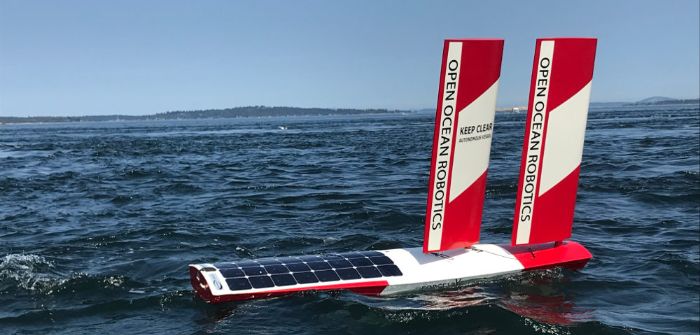A new generation of drone boats powered by renewable energy could help revolutionize the forecasting of ocean-related weather.
A number of companies have begun producing ocean-going prototypes including the Canadian startup Open Ocean Robotics. The startup’s ocean drones can stay at sea for up to a year, continuously collecting data via onboard sensors that include 360° cameras and lidar.
The data can be relayed to the user in real time via satellite. According to Open Ocean Robotics its vessels could easily be fitted out with sensors to measure air temperature, windspeed, barometric pressure and wind direction for marine weather forecasting.
The company sees the drone boats as a potential replacement for the array of buoys used in the Tropical Atmosphere Ocean (TAO) project.
The project, which has been ongoing since the mid-1980s, has seen around 70 deep ocean buoys deployed in equatorial waters in the Pacific collecting data critical for forecasting weather and ocean-related weather events like El Nino. However, at least half of the TAO buoys are no longer operational.
Open Ocean Robotics has tested its drone boat in the waters off Vancouver Island on Canada’s west coast, with its biggest voyage to date a 54-hour journey in which the boat covered nearly 46 miles.
“We’ve demonstrated our vessel’s ability to voyage autonomously as well as remotely, go on multi-day missions, collect oceanographic data and transmit in by cellular or satellite communications,” CEO Julie Angus told Forbes.
The next stage is to take the boat in to deeper water, with plans to conduct sea trials during major storms this winter.
“Our boat will repeatedly capsize during these conditions, but its self-righting design will enable it to continue operating,” said Angus.



